Entertainment
Tyler Christopher, Emmy-Winning General Hospital Star, Dead at 50 on November 1, 2023 at 10:24 am The Hollywood Gossip
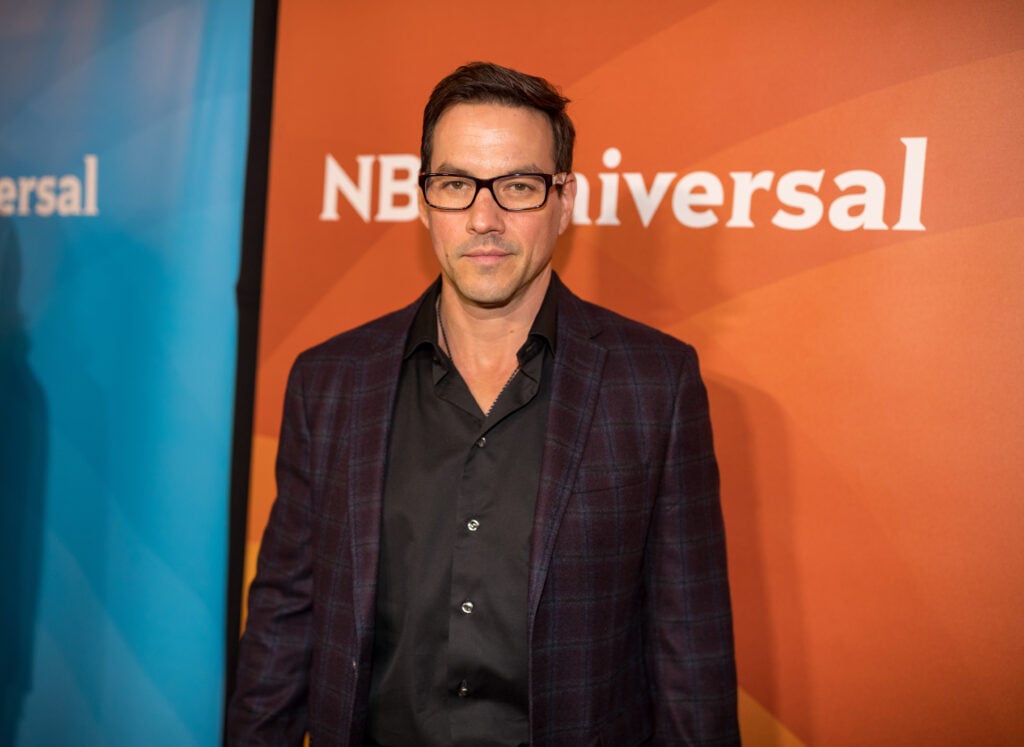
Very sad and extremely shocking news out of the entertainment world:
Tyler Christopher, an Emmy-winning actor best known for his role on the soap opera General Hospital, has passed.
He was 50 years old.
The awful news was shared on Instagram by Christopher’s former co-star, Maurice, Benard.
Tyler Christopher attends the 2018 NBCUniversal Winter Press Tour at The Langham Huntington, Pasadena on January 9, 2018 in Pasadena, California. (Photo by Christopher Polk/Getty Images)
“It is with great sadness that we share the news of the passing of Tyler Christopher,” Benard wrote online. “Tyler passed away this morning following a cardiac event in his San Diego apartment.”
Benard continued as follows:
“Tyler was a truly talented individual that lit up the screen in every scene he performed and relished bringing joy to his loyal fans through his acting.
“Tyler was a sweet soul and wonderful friend to all of those who knew him.”
Tyler Christopher in a scene that airs the week of September 27, 2010 on ABC’s GENERAL HOSPITAL. (Getty)
Christopher played the character of Nikolas Cassadine on General Hospital from 1996 to 2016.
In addition to his work on the ABC medical drama, the star portrayed Stefan DiMera on Days of Our Lives from 2001 to 2019 and also made appearances in Thor: God of Thunder, Shouting Secrets, Out of the Black and Pretty Broken.
Christopher won a Daytime Emmy in 2016 for outstanding lead actor in a drama series for General Hospital.
Tyler Christopher speaks onstage at the 43rd Annual Daytime Emmy Awards at the Westin Bonaventure Hotel on May 1, 2016 in Los Angeles, California. (Earl Gibson III/Getty Images)
In his heartfelt message, Benard also noted that “Tyler was an advocate for better mental health and substance use treatment who openly spoke about his struggles with bipolar depression and alcohol.
“We are beyond devastated by the loss of our dear friend and pray for his children and his father.”
In 2008, Christopher married former ESPN reporter Brienne Pedigo; the two got divorced in 2021.
The exes two children: Greysun James Christopher and Boheme Christopher.
Christopher was also previously married to Desperate Housewives cast member Eva Longoria from 2002 to 2004.
(Instagram)
Christopher’s manager honored the star in a statement to E! News.
“This news was incredibly shocking, and I am devastated by his loss,” the rep said.
“He was a very gifted actor, and more importantly, an amazing friend. My heart goes out to his friends and family who loved him so much.”
This past May, Christopher was arrested at the Hollywood Burbank Airport for public intoxication and then released on $250 bail.
Back in 2019, Christopher was arrested for a similar incident in 2019 when he fell asleep in the back of an Uber.
Tyler Christopher attends The 41st Annual Daytime Emmy Awards at The Beverly Hilton Hotel on June 22, 2014 in Beverly Hills, California. (Alberto E. Rodriguez/Getty Images for NATAS)
Said General Hospital Executive Producer Frank Valentini in a statement of his own:
“I am heartbroken over the news of Tyler Christopher’s passing.
“He was kind, an incredible actor, and dear friend, who was beloved by our GH family and fans of Nikolas Cassadine.
“On behalf of everyone at General Hospital, our heartfelt sympathies go out to his loved ones during this difficult time.”
Tyler Christopher, Emmy-Winning General Hospital Star, Dead at 50 was originally published on The Hollywood Gossip.
Tyler Christopher has passed away at a young age. We send our condolences to the loved ones of this actor.
Tyler Christopher, Emmy-Winning General Hospital Star, Dead at 50 was originally published on The Hollywood Gossip.
The Hollywood Gossip Read More
Advice
Crafting the Ultimate Alien Costume

Creating an amazing alien costume is a fun and creative process that combines imagination, artistic skills, and some technical know-how. It all starts with a burst of inspiration—an idea for a creature from another world that is both strange and fascinating.
Step 1: Research and Design
The first step in making an alien costume is research. Look at different sci-fi movies, books, and even scientific theories about what extraterrestrial life might look like. Spend time sketching your ideas; this helps you visualize your alien character. Think about where this alien comes from and how it might look based on its environment.
Step 2: Building the Alien Head
The head is one of the most important parts of the costume. You can start with a foam mannequin head and then use oil-based clay to sculpt unique features, like unusual shapes or textures. This process takes time, often several weeks, as you want to get the details just right. Once you’re happy with the sculpture, you can make molds and cast the head in materials like silicone or latex.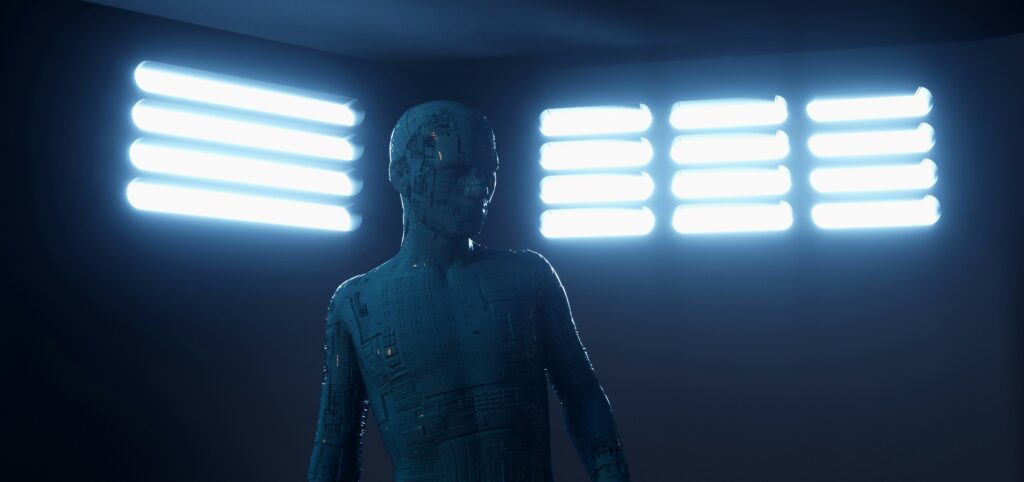
Step 3: Creating the Body Suit
Next, you’ll need a body suit that fits well and looks otherworldly. Use stretchy fabrics like spandex to create a suit that allows for movement. You can add padding to give your alien a unique shape or muscular appearance. Make sure to include a zipper for easy wear.
Step 4: Adding Texture and Skin Details
To make your alien look realistic, focus on adding texture to the skin. You can use silicone or latex to create scales, bumps, or other patterns that suggest an exotic biology. Airbrushing techniques will help you paint the suit with colors that make it look alive.
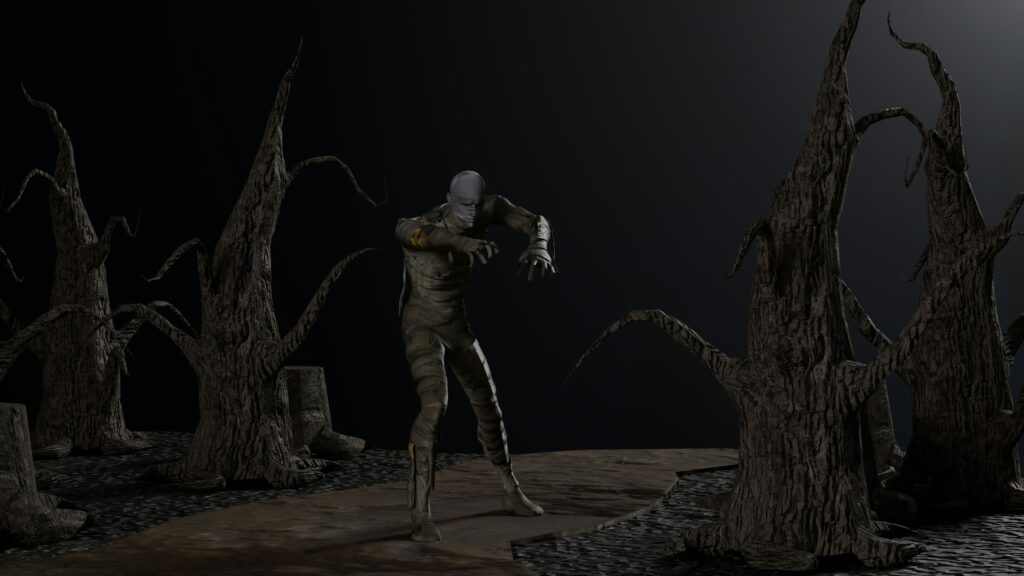
Step 5: Designing the Eyes
Alien eyes are crucial for creating a captivating look. You might use custom-made contact lenses or create large prosthetic eyes that stand out. These can be made by sculpting eye shapes in clay, making molds, and then painting them to look realistic.
Step 6: Hands and Feet
Don’t forget about the hands and feet! You can create custom gloves and shoes that match your alien design. Use latex or silicone to make them look unique, and consider adding details like long fingers or unusual shapes.
Step 7: Incorporating Lights
To make your costume even more eye-catching, consider adding lights. Using LED strips or glow-in-the-dark materials can give your alien an otherworldly glow. Plan where these lights will go during the design phase so they blend seamlessly into your costume.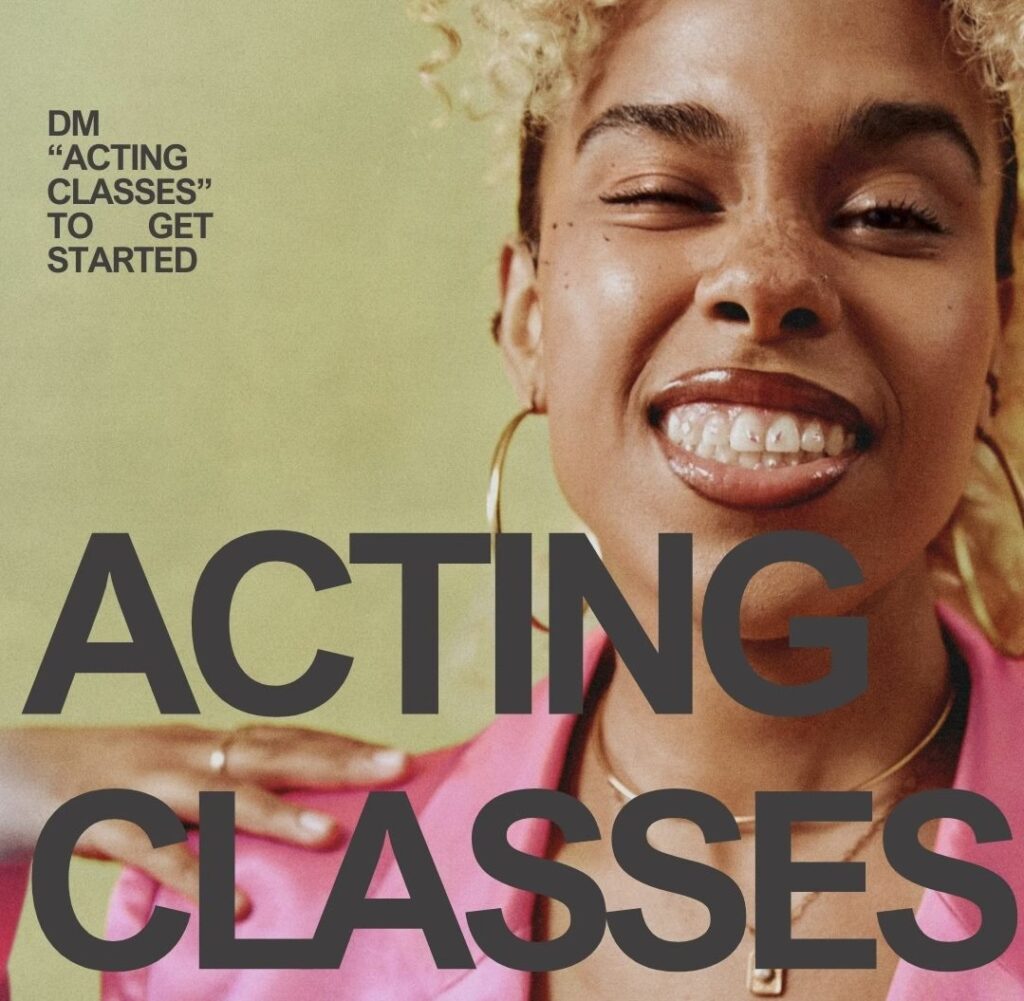
Step 8: Final Assembly
Once all parts are created, it’s time for assembly. Put everything together and test how it fits on the performer. Make any necessary adjustments to ensure comfort and mobility. A full dress rehearsal is essential to identify any issues before the big reveal.
Conclusion
Creating an alien costume is an exciting project that allows you to explore your creativity. While it can take anywhere from 8 to 12 weeks and cost between $2,000 and $5,000 for high-quality materials, the end result is worth it—a unique costume that transports audiences into another world! With patience and attention to detail, you can bring your alien vision to life in a way that captivates everyone who sees it.
Bolanle Media is excited to announce our partnership with The Newbie Film Academy to offer comprehensive courses designed specifically for aspiring screenwriters. Whether you’re just starting out or looking to enhance your skills, our resources will provide you with the tools and knowledge needed to succeed in the competitive world of screenwriting. Join us today to unlock your creative potential and take your first steps toward crafting compelling stories that resonate with audiences. Let’s turn your ideas into impactful scripts together!
Advice
The Silence Says It All: How Subtext Elevates Your Story

Subtext is the unsaid, the invisible layer of meaning that lies beneath the surface of a film’s dialogue, visuals, and symbolism. It’s the art of showing, not telling, and it’s what makes a film linger in the audience’s mind long after the credits roll. Mastering subtext allows filmmakers to craft nuanced stories that resonate on a deeper level.
1. What is Subtext and Why Does It Matter?
Subtext is the implicit meaning that audiences infer from a scene, rather than what’s explicitly stated. It adds complexity to a story, inviting viewers to engage actively.
- Creates Depth: Subtext transforms simple scenes into layered narratives.
- Enhances Realism: In life, people rarely say exactly what they feel. Subtext reflects this truth.
- Builds Engagement: Viewers are drawn into the story, piecing together hidden meanings.
For example, a character who says, “I’m fine” but clenches their fists conveys a conflict that words alone cannot express.
2. Subtext in Dialogue: When Words Aren’t Enough
Dialogue often works best when it’s indirect. Instead of spelling things out, let characters reveal their emotions through what they don’t say.
- Understatement: Simple words can carry powerful emotions. For instance, in Lost in Translation, Bob’s whispered goodbye is packed with unspoken meaning.
- Dual Meanings: Characters may say one thing but mean another. This is common in romantic tension or conflict.
- Silence: Sometimes, the absence of dialogue speaks louder than words. Awkward pauses or loaded silences can heighten drama.

3. Visual Subtext: Telling Stories Through the Frame
Cinematography, production design, and blocking are key to creating visual subtext.
- Symbolic Imagery: Objects, colors, and settings can suggest deeper themes. In Schindler’s List, the red coat among black-and-white imagery symbolizes lost innocence.
- Character Placement: The distance between characters in a frame can convey emotional separation or closeness.
- Lighting and Shadows: Play with light and darkness to reflect inner turmoil or duality.
Subtext in visuals is about layering meaning into the mise-en-scène, rewarding attentive viewers.
4. Using Symbolism to Reinforce Subtext
Symbolism is a powerful tool for embedding subtext into your story.
- Recurring Motifs: Repeated elements, like the spinning top in Inception, invite interpretation.
- Props with Purpose: Everyday objects can carry symbolic weight. A broken clock might signify a disrupted timeline or lost hope.
- Nature as Subtext: Weather and landscapes often mirror emotional states. A thunderstorm during a breakup scene reflects inner chaos.

5. How to Develop Subtext in Your Script
Incorporating subtext requires intentionality. Here’s how to weave it into your film:
- Know Your Characters: Understand their motivations and fears. Subtext often stems from what they’re unwilling to reveal.
- Think Beyond Dialogue: Focus on nonverbal cues—gestures, glances, or even a character’s posture.
- Collaborate with Your Team: Work with your cinematographer, production designer, and editor to ensure subtext is carried through visuals and pacing.
6. The Risks and Rewards of Subtext
While subtext enriches storytelling, it requires balance.
- The Risks:
- Too subtle, and the audience might miss your message.
- Too overt, and it loses its mystery.
- The Rewards:
- Engaged audiences who feel part of the discovery process.
- Stories that resonate emotionally and intellectually.
Study films like The Godfather or Her for masterclasses in how subtext elevates storytelling.
Conclusion
The true power of subtext lies in its ability to connect audiences with your story on a deeper level. By blending nuanced dialogue, evocative visuals, and purposeful symbolism, you can craft films that linger in hearts and minds. In the art of filmmaking, sometimes saying less truly means saying more.
Bolanle Media is excited to announce our partnership with The Newbie Film Academy to offer comprehensive courses designed specifically for aspiring screenwriters. Whether you’re just starting out or looking to enhance your skills, our resources will provide you with the tools and knowledge needed to succeed in the competitive world of screenwriting. Join us today to unlock your creative potential and take your first steps toward crafting compelling stories that resonate with audiences. Let’s turn your ideas into impactful scripts together!
Advice
How Color Shapes Film Mood and Tone

Color is a powerful storytelling tool in filmmaking. It shapes a film’s tone, influences emotions, and enhances visual storytelling. By understanding color theory and symbolism, filmmakers can craft compelling narratives that resonate with their audience on a deeper level.
1. The Basics of Color Theory in Film
At its core, color theory helps filmmakers choose and combine colors to achieve specific effects.
- Primary Colors: Red, blue, and yellow are the building blocks of all colors.
- Color Harmony: Complementary (opposites on the color wheel) and analogous (adjacent colors) schemes create visual balance or tension.
- Warm vs. Cool Colors: Warm tones (red, orange, yellow) evoke energy and passion, while cool tones (blue, green, purple) create calmness or melancholy.
Understanding these basics allows filmmakers to design palettes that support their story’s emotional arc.
2. Setting the Tone with Color Palettes
A film’s color palette sets the mood and reinforces its themes.
- Monochromatic Schemes: Using shades of a single color can create a minimalist and cohesive look, as seen in Moonlight.
- Contrasting Colors: Films like Amélie use vibrant contrasts to highlight whimsy and vibrancy.
- Muted Tones: Desaturated colors in The Road evoke despair and a bleak post-apocalyptic world.
Choosing the right palette ensures the audience feels the intended emotions without overt exposition.
3. The Emotional Language of Colors
Colors evoke specific emotions and associations, making them essential for visual storytelling.
- Red: Passion, danger, or power (Schindler’s List: The girl in the red coat).
- Blue: Sadness, serenity, or isolation (Her: Melancholy longing).
- Yellow: Joy, caution, or decay (Breaking Bad: The descent into moral chaos).
- Green: Growth, envy, or the unnatural (The Matrix: A digital world).
Consider your story’s themes when assigning symbolic meanings to colors.
4. Practical Tips for Using Color on a Budget
Big budgets aren’t required to use color effectively.
- Lighting: Experiment with gels and filters to alter light color.
- Costume and Set Design: Coordinate wardrobe and props to align with your palette.
- Post-Production: Use color grading software to fine-tune tones and hues.
Indie filmmakers can create visually stunning projects by focusing on intentional color choices during pre-production.
5. Famous Examples of Color in Film
Learn from cinematic classics that masterfully use color:
- The Grand Budapest Hotel: Wes Anderson’s pastel hues create a whimsical, nostalgic world.
- The Godfather: Golden tones symbolize power and corruption.
- Black Panther: Vibrant colors celebrate African culture and Wakanda’s identity.
Analyze these examples to inspire your own projects.
Conclusion
Color is more than a visual element—it’s a storytelling powerhouse. By understanding its emotional impact and mastering its practical application, filmmakers can elevate their craft. Whether you’re working on a blockbuster or an indie film, thoughtful color choices can make your story unforgettable.
Bolanle Media is excited to announce our partnership with The Newbie Film Academy to offer comprehensive courses designed specifically for aspiring screenwriters. Whether you’re just starting out or looking to enhance your skills, our resources will provide you with the tools and knowledge needed to succeed in the competitive world of screenwriting. Join us today to unlock your creative potential and take your first steps toward crafting compelling stories that resonate with audiences. Let’s turn your ideas into impactful scripts together!
-

 Advice4 weeks ago
Advice4 weeks agoHow Community Engagement Ignites Cultural Phenomena
-
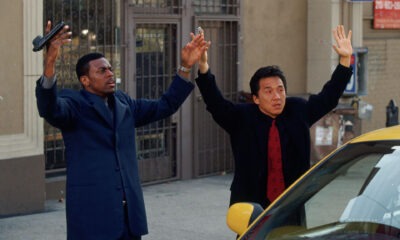
 Entertainment4 days ago
Entertainment4 days agoWhat Chris Tucker and Jackie Chan Teach Us About On-Screen Chemistry
-

 Advice4 days ago
Advice4 days agoThe Impact of Music on Film Pacing
-

 Advice7 days ago
Advice7 days agoMaster the Art of Film Casting
-

 Advice1 week ago
Advice1 week agoHow to Create Unforgettable Movie Scenes
-

 Advice2 weeks ago
Advice2 weeks agoA Reality Check for Aspiring Filmmakers
-

 Advice1 week ago
Advice1 week agoReinventing Genres: Tips for Filmmakers
-

 Advice1 week ago
Advice1 week agoScreenwriting Tips for Aspiring Filmmakers









